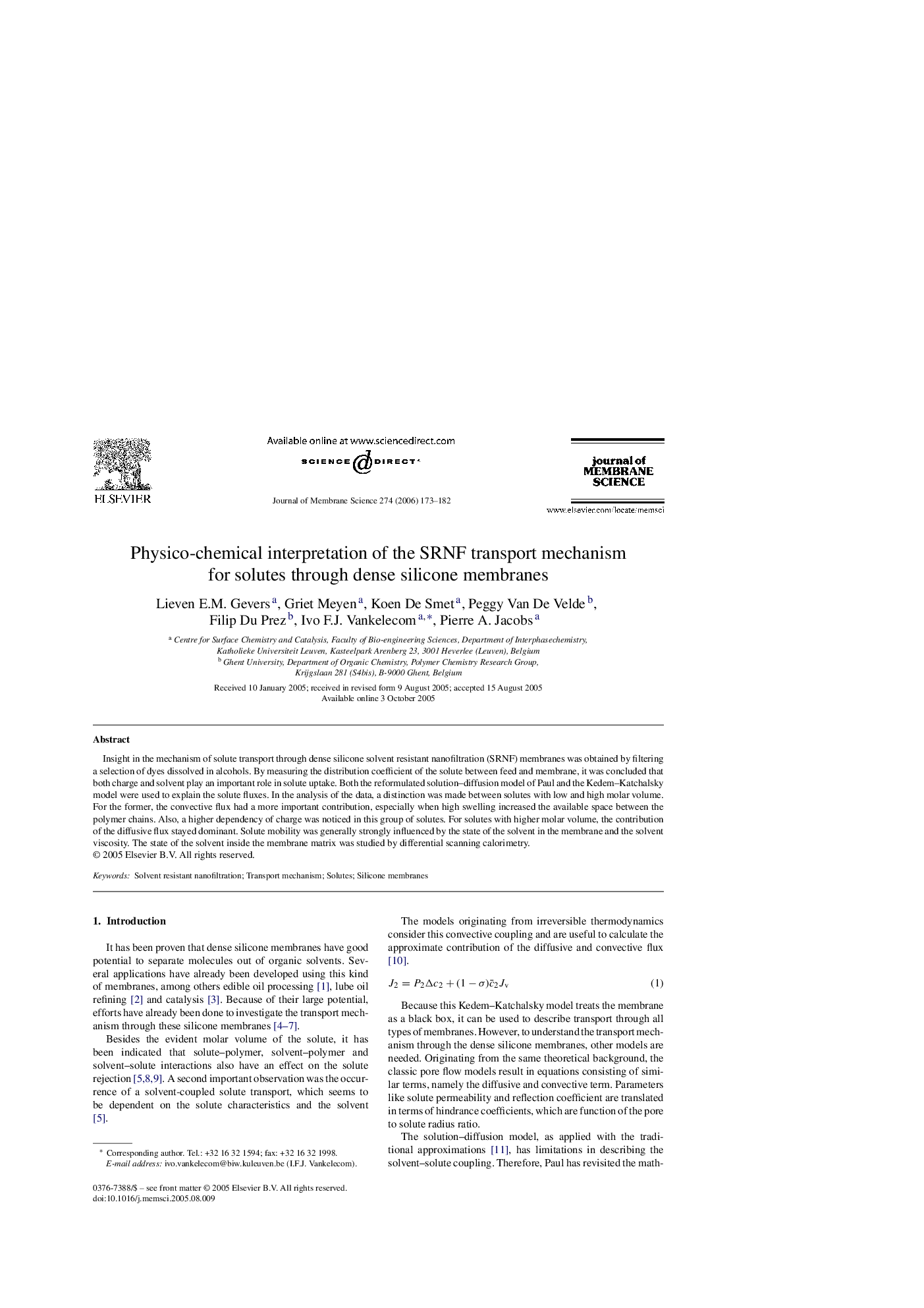| Article ID | Journal | Published Year | Pages | File Type |
|---|---|---|---|---|
| 639461 | Journal of Membrane Science | 2006 | 10 Pages |
Insight in the mechanism of solute transport through dense silicone solvent resistant nanofiltration (SRNF) membranes was obtained by filtering a selection of dyes dissolved in alcohols. By measuring the distribution coefficient of the solute between feed and membrane, it was concluded that both charge and solvent play an important role in solute uptake. Both the reformulated solution–diffusion model of Paul and the Kedem–Katchalsky model were used to explain the solute fluxes. In the analysis of the data, a distinction was made between solutes with low and high molar volume. For the former, the convective flux had a more important contribution, especially when high swelling increased the available space between the polymer chains. Also, a higher dependency of charge was noticed in this group of solutes. For solutes with higher molar volume, the contribution of the diffusive flux stayed dominant. Solute mobility was generally strongly influenced by the state of the solvent in the membrane and the solvent viscosity. The state of the solvent inside the membrane matrix was studied by differential scanning calorimetry.
